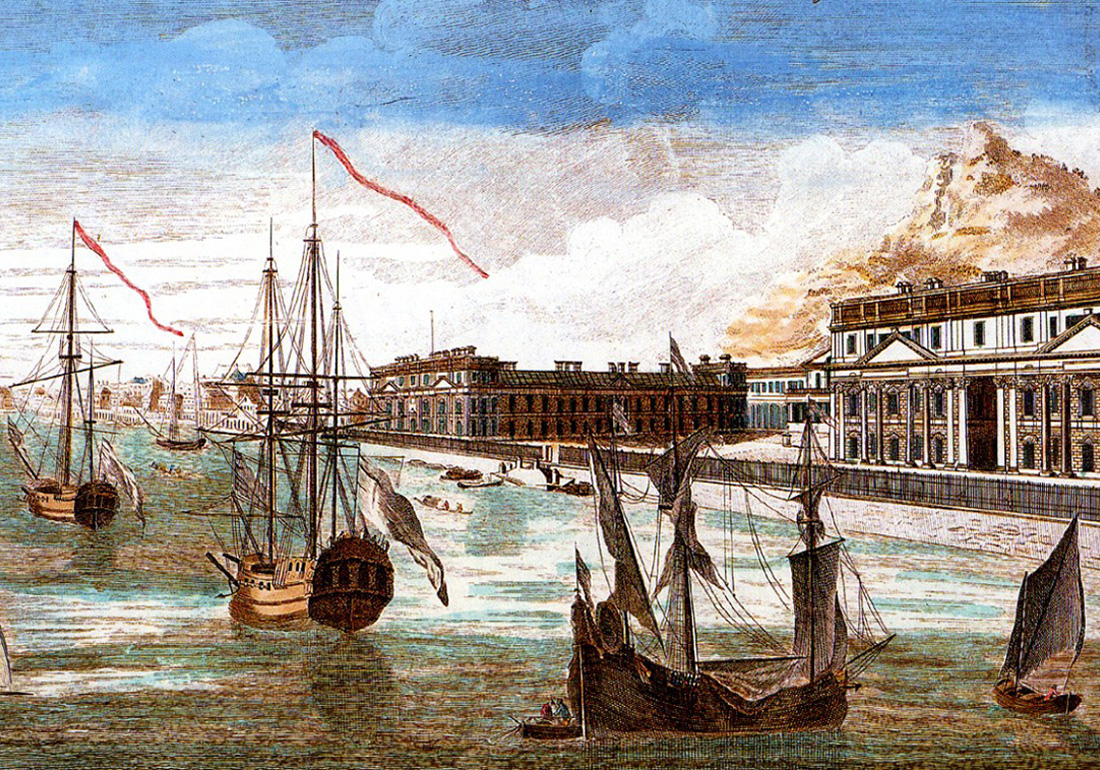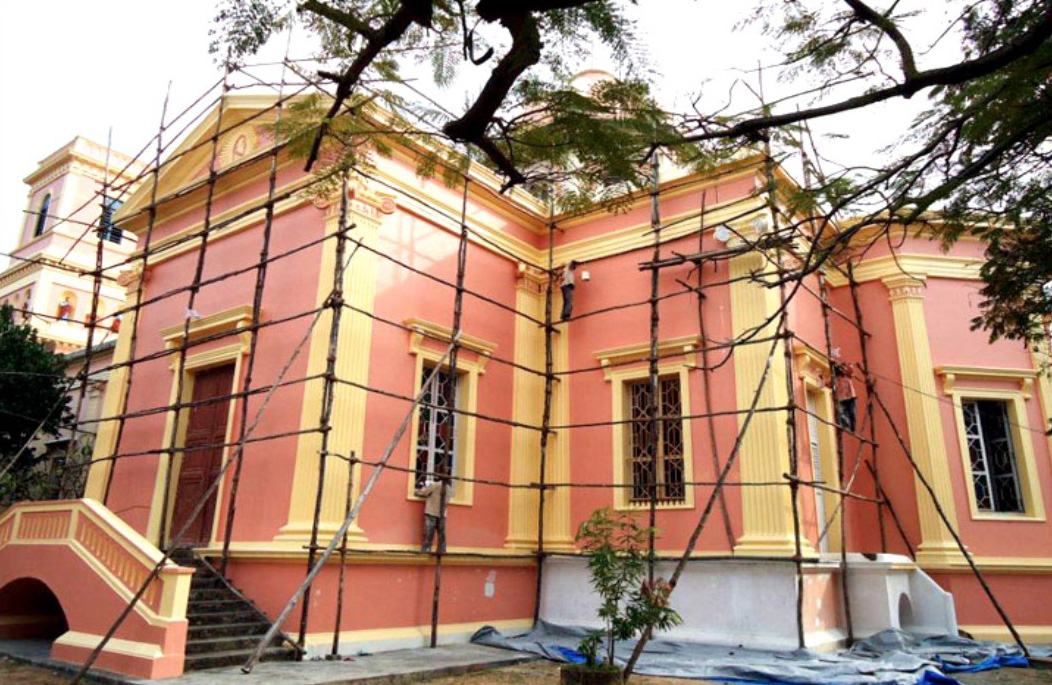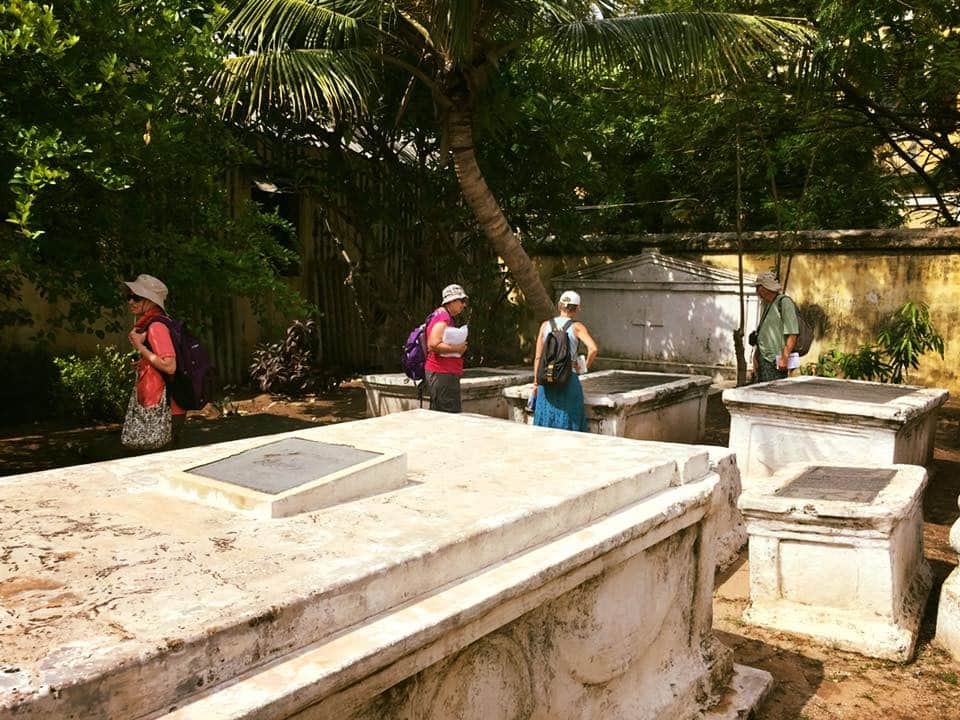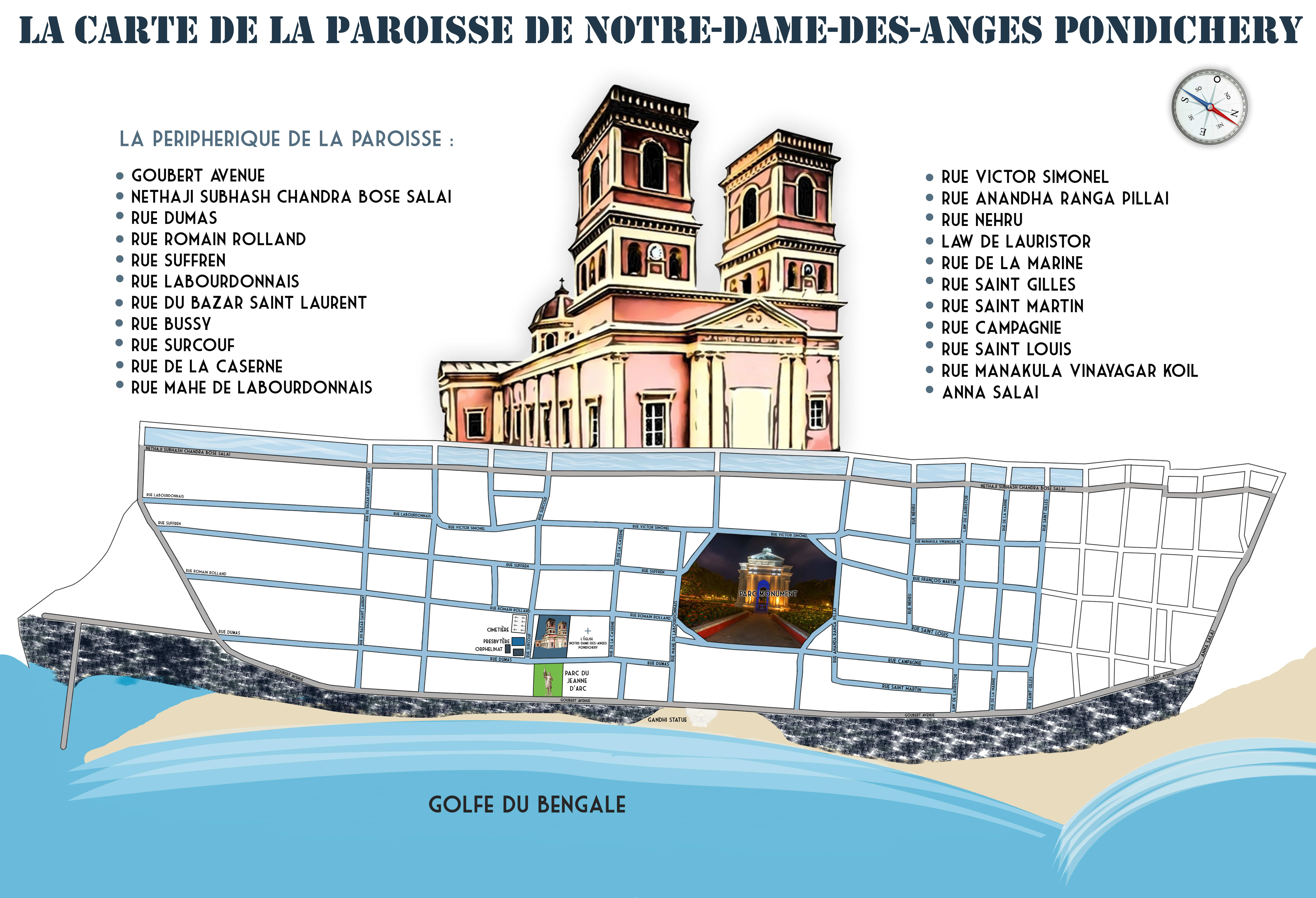History of Parish
Facing the rising sun, along the coast of Bay of Bengal, stands the majestic towers of Our Lady of Angels,
commonly called as the ‘ Kaps Kovil’ - the Capuchins’ Church. This is the fourth oldest church in Puducherry Union Territory.
It is the only church that offers mass in three languages namely French, Tamil and English.
1632
1634
1642
The first batch of six French Capuchins arrived at Pondicherry with the French traders.
The French closed its sea company and the Capuchins too left Pondicherry.
The second batch of Capuchins arrived at Pondicherry but left soon.

1673
The third batch of Capuchins arrived at Pondicherry with the French Settlers. François Martin founded the city of Pondicherry. He officially invited the French Capuchins from Madras, for the spiritual ministry and the missionary activity in Pondicherry.
1674
January 15, Fr. Cosmos De Gien founded the Capuchin mission in Pondicherry.
1686
Frs. Jacques de Bourges, Lawrence de Angoulême and Espirit de Tours arrived.
1693
The Dutch captured Pondicherry and expelled the missionaries.
1699
The missionaries again returned to Pondicherry. Tamil Christian community was constituted as a parish under the diocese of Mylapore. Fr. Jacques de Bourges OFM. Cap was appointed the first Parish Priest of Pondicherry. Within few months, the Jesuits were appointed exclusively to the Tamils and The Capuchins became in charge of the Europeans and the Eurasians. This bifurcation is considered to be the beginning of the parish of Our Lady of Angels unofficially.

1707
The first church of the Capuchins dedicated to Our Lady the Angels was built.
1738
The Capuchin church of the Angels became a parish in the diocese of Mylapore. Fr. Dominique de Valence was appointed as the first Parish Priest.
1739
The first Church of the Capuchins dedicated to Our Lady of the Angels was built in 1709, but it was structurally weak. So, it was demolished and rebuilt from 1739 to 1758.
1761
English captured Pondicherry and destroyed the second church built in 1739.
1765
The third Church of Our Lady of the Angels was built from 1765 to 1770. The church with its bell tower exists till date adjacent to the Presbytery on Rue Surcouf.
1776
23rd September, Pope Pius VI gives his consent for the erection of Apostolic Prefecture in Pondicherry and Fr. Sebastian de Nevers OFM.Cap, appointed as the Prefect Apostolic over the Europeans and the Eurasians. The church of Our Lady of the Angels became the seat of Apostolic Prefecture.
1792
French Revolution affected the development of the Capuchin Prefecture and Fr. Benedictus de Monterotundo was the last Prefect Apostolic.
1811
The end of Missionary labour of the French Capuchins of the Province de Tours. The Italian Capuchins came to Pondicherry to continue the Mission at Our Lady of the Angels for the Europeans and the Eurasians.
1828
The Capuchin mission for the Europeans and the Eurasians came to an end in Pondicherry and was transferred to the French Priests of the Holy Spirit Congregation.
1828
14th June, Fr. Pierre-Jean-Norbert CALMELS becomes the Parish Priest of Our Lady of the Angels. He was not a Spiritan but chosen by the Congregation of the Holy Spirit Fathers to start their mission in Pondicherry.
1840
5th March, Fr. Pierre-Jean-Norbert CALMELS becomes the Apostolic Prefect of Pondicherry for the Europeans and Eurasians thus establishing the seat of Apostolic Prefecture in Pondicherry after 1792.
1851
14th May, the foundation stone for the construction of the present Church of Our Lady of the Angels was laid and the construction was carried out by Architect Louis Guerre.
1855
The new and the present church of Our Lady of the Angels was blessed and opened in the month of May. It became the Church of Apostolic Prefecture also known with the other names like Caps Koil and White Parish.

1886
1st September, Pope Leo XIII's by his Bull Humanae Salutis Auctor erected the Indian Hierarchy abolishing the Apostolic Prefecture. Pondicherry became the Archdiocese with Msgr. Laouenen becoming the Archbishop. Our Lady of the Angels became a Parish in the Archdiocese of Pondicherry.
1887
27th April, Msgr. Corbet the last Prefect Apostolic of Pondicherry handed over the Parish to the Priests of Société des Missions étrangères de Paris (M.E.P) thus bringing to end the 59 years (1828-1887) of missionary work of the Holy Spirit Fathers to the Europeans and the Eurasians in Pondicherry.
1887
28th April, the mandate of Archbishop Laouenen reinstated that Our Lady of the Angels will continue to remain as the Parish for the Europeans and the Eurasians.
1984
Fr. Dusseigne, M.E.P was the last MEP priest who served as the Parish Priest for 23 years from 1984 to 20th September 2007.
2008
11th November, 2007, Fr. Michael John Antonysamy was the First Indian to become the Parish Priest in the line of succession from the French Capuchins, Italian Capuchins and the French Spiritans and M.E.P priests, who were shepherding the Parish from 1674.
2009
A major renovation of the Parish Church was carried out with the help of the Association Les Amis du Patrimoine Pondichérien, the French ministry for Culture and the foundation Vieilles Maisons Françaises.

2012
4th March, Archbishop Antony Anandarayar blessed the renovated Church of Our Lady of the Angels.
2015
13th September, Archbishop Antony Anandarayar appointed Fr. Cyril SANDOU as the Parish priest of Our Lady of Angels.
2016
On 14th August a new Grotto dedicated to Our Lady of Angels was constructed. It was blessed and opened by Archbishop Antony Anandarayar.

2017
The renovation of the three huge bells of the Church was carried out. It was blessed and inaugurated on Sunday 28th November 2017, on the Solemnity of Christ the King.
Religious Educational Institutions
st.joseph of cluny principle house
This Community has the unique privilege of being the first Community of Cluny in India. The origin of the Community could be traced back to the very foundation of Cluny in India, when the first three Sisters from Bourbon (Reunion) arrived in Pondicherry in the month of January 1827. Having heard about Blessed Anne Marie Javouhey, our Foundress and her initiative in adopting the Lancastrian pedagogy in Education in France and in several French colonies, Desbassyns de Richmont, Governor of Reunion invited the Sisters of St. Joseph of Cluny, to take up the education of girls in Pondicherry. The Origin of this Community is thus a story of a trustful, surrender to the Will of God in the liberative mission of Jesus by the Spirit-filled Daughters of Blessed Anne Marie Javouhey – the prophetess of that time.
The Government opened a free School and boarding School for European Girls on 12th February 1827. They were taught reading, writing, grammar, arithmetic, history, geography, mythology, needle work, stitching, embroidery, and artificial flower making, weaving and lace making etc. Art and Music were also encouraged. This was our first technical school in India and the primary school still exists under the title of Pensionnat de Jeunes Filles.

Various Ministries by the Sisters Today
Atelier- Embroidery Centre
Music School
Dance class
Parrainage
Cluny Hospital
French class
Counselling
Bible Class
House Visiting
Provicialate
Hospital Visits
Children’s home
Old age home
Montessori and primary school
Former Notre Dame Des Anges
This is the third Church built by the Capuchins in 1736, in alignment with then monastery whose
belfry is still visible. It was seriously damaged in the British attack of 1761 and was rebuilt around 1770.
From 1790 – 93 it served as a venue for meetings of local French Revolution patriots.
Today it houses an orphanage for boys.
Joan of Arc
A great statue of Jeanne d’Arc, natural in white marble, placed on a land opposite the church.The statue of Joan of Arc was donated by Mr. Gaudart. It was blessed by Monsignor Morel, the Archbishop of Pondicherry on 14th February 1920 in the presence of Rev. Fr. Borey, the Parish Priest and Mr. L. Gerbinis, the Governor of Pondicherry and Mr. H. Gaebele, the Mayor of Pondicherry.

Old Capuchin Cemetry
This enclosure of the Capuchins dates back to 1726, as the cemetery of the French. It is located between Romain Rolland and Dumas streets until the construction of the presbytery in 1859. It has the tombs of important figures in the late eighteenth century; hence it is a very significant ancient cemetery in Pondicherry. The oldest tombstone is that of Jacques Lhyuer in 1703, which was obviously transferred from the old Christian cemetery or French; the others are from the end of the century: three epitaphs concern Boyelleau family, those of André Boyelleau, former director of the Bank, his wife Jeanne Boyelleau and that of Simon Lagrenée Mezieres, their son. Apart from this one can also see the tombs of Jacques Law Clapernou, nephew of Jean Law de Lauriston, Pauline Kerjean, and Prosper Chermont. The much disputed memorial of Busy must also be added to the line of tombs in the cemetery.
